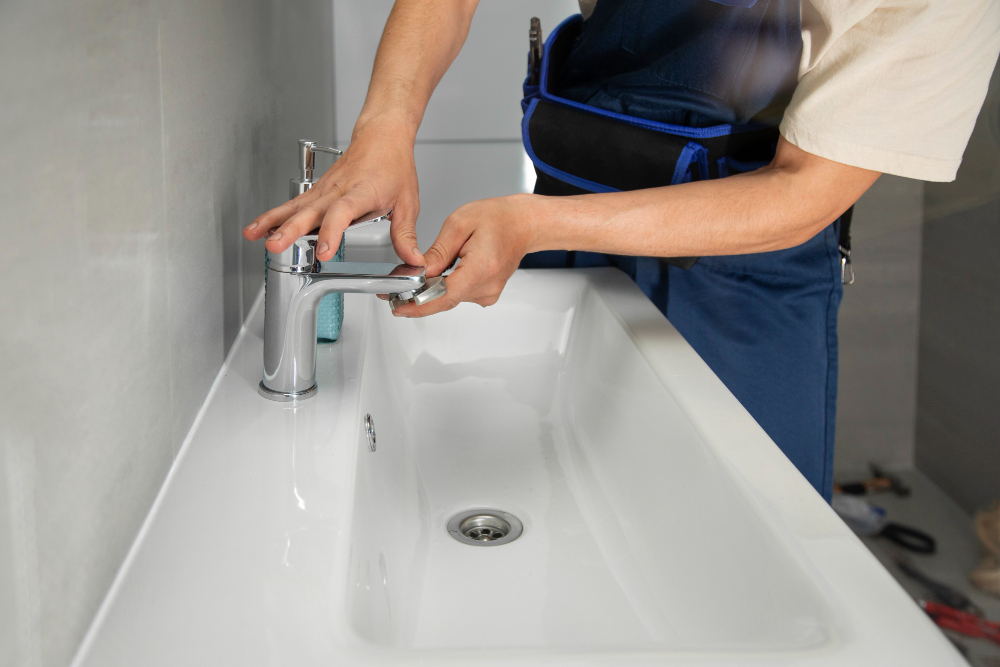The primary difference between a copper faucet and a stainless steel faucet lies in their material composition.
Copper offers a warmer aesthetic and natural antimicrobial properties while stainless steel is known for its sleek appearance and superior corrosion resistance.
Copper faucets bring a unique, rustic charm and kill bacteria on contact, making them ideal for hygiene-conscious environments.
On the other hand, stainless steel faucets are highly durable, resist stains and rust, and require minimal maintenance.
Read on to learn more about these two materials and decide which is best for your bathroom.
Table of Contents
ToggleCopper or Stainless Steel Faucet: Which One Is Better?
Copper and stainless steel faucets are both durable and offer modern aesthetics to your bathroom.
If you’re torn between which suits you best, let’s explore several aspects below:
Durability
Copper faucets are highly durable and can last a lifetime if properly maintained, but they can develop a patina over time, which some find appealing.
Stainless steel faucets are incredibly durable and resistant to rust, corrosion, and tarnishing, maintaining their appearance over many years with minimal upkeep.
Corrosion Resistance
Copper naturally resists corrosion but can tarnish and develop a greenish patina, especially in humid environments.
Stainless steel offers superior corrosion resistance, making it an excellent choice for high-moisture areas like bathrooms and kitchens, where maintaining a pristine look is important.
Price
Copper faucets are generally more expensive due to the cost of raw materials and the manufacturing process.
Stainless steel faucets are often more affordable, offering a budget-friendly option without compromising on quality and durability.
Maintenance Requirements
Copper faucets require regular maintenance to prevent tarnishing and maintain their shiny appearance, including periodic cleaning and polishing.
Stainless steel faucets are low-maintenance, typically requiring just regular cleaning with mild soap and water to keep them looking new.
Copper vs Stainless Steel Faucets: Pros and Cons
Characteristics, Advantages, and Disadvantages of Copper Faucets
Copper faucets offer a distinctive, elegant look with natural antimicrobial properties that kill bacteria, making them hygienic.
They are highly durable but can tarnish over time, requiring regular maintenance to preserve their appearance.
The higher cost and maintenance needs may be a drawback for some homeowners.
Characteristics, Advantages, and Disadvantages of Stainless Steel Faucets
Stainless steel faucets are known for their sleek, modern look and superior corrosion resistance.
They are highly durable, resistant to rust and stains, and require minimal maintenance, making them a practical choice for many households.
Their affordability and ease of maintenance make them popular, although they lack the unique charm of copper.
Comparison of Applicable Scenarios and Environmental Requirements
Copper faucets are ideal for homeowners seeking a unique, vintage look and prioritizing antimicrobial properties.
They are well-suited for rustic or traditional bathroom designs.
Stainless steel faucets are perfect for contemporary settings where durability, low maintenance, and a sleek appearance are desired.
They are particularly suitable for high-moisture environments and households looking for cost-effective solutions.
Recommended Copper Faucet Supply Line: Popkb

Popkb offers a diverse range of high-quality copper faucet products, including three-hole, single-hole, and wall-mounted styles.
Their three-hole faucets provide a classic look with separate handles for precise temperature control.
The single-hole faucets are ideal for modern, minimalist designs, saving counter space and offering easy installation.
Meanwhile, wall-mounted faucets from Popkb add a contemporary touch, freeing up counter space and simplifying cleaning.
Each product is crafted with durability and style in mind, ensuring a perfect fit for various bathroom decors.
For more details, you can visit their website.


